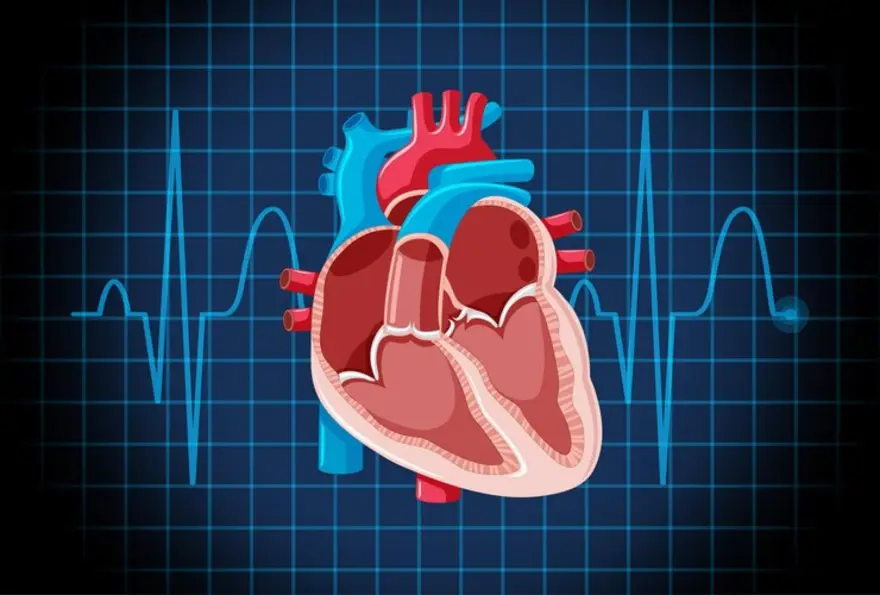Preventive Healthcare
Osteoporosis: Symptoms, Causes, Diagnosis And Treatment
2767 Views
0

Osteoporosis is a bone disease characterised by low bone mass and loss of bone tissue. It decreases bone strength and results in weak and brittle bones. Osteoporosis makes bones so weak and fragile that they break or fracture while doing routine activities such as standing or walking or even mild stresses such as bending over or coughing.
The bones most frequently impacted by osteoporosis-related fractures are ribs, hips, bones in the wrist and the spine. Nevertheless, any skeletal bone may experience it.
Women and men of all races can experience osteoporosis symptoms, but white and Asian women are more likely to be affected, particularly those who are past menopause. With advancing age, the condition grows more prevalent and affects women more frequently than males.
Symptoms of Osteoporosis
In the early phases of bone loss, there are usually no symptoms. However, if your bones have been compromised, you may experience the following osteoporosis symptoms:
- A backache caused by a collapsed or fractured vertebrae
- Gradual loss of height
- Stooped posture
- A bone fracture that occurs more easily
Causes of Osteoporosis
Bone is mostly composed of minerals such as calcium. Our bones are constantly broken down and replaced with new ones. This bone-building cycle is controlled by hormones produced in our bodies, as well as calcium and vitamin D levels. When bone tissue and minerals are lost quicker than they are replaced, osteoporosis develops.
The amount of bone mass attained in your youth will determine your risk of getting the condition. Your risk might be low if a higher bone mass peak was attained. Certain factors can increase your risk of getting the condition.
Some unavoidable risk factors include:
- Age
- Ethnicity
- Race
- Sex
- Body frame size
- Family history
Hormone Levels
One of the strongest risk factors includes the reduction of oestrogen levels in women at menopause. Prostate cancer treatment in men and breast cancer in women can accelerate bone loss. Hyperthyroidism, or the excessive production of thyroid hormone, can also cause bone loss.
Dietary Factors And Lifestyle Choices
Osteoporosis is more common in those who have:
- Eating disorder such as anorexia or bulimia nervosa
- Excessive alcohol intake
- Low calcium intake
- Inactivity or too little exercise
- Tobacco use
The risk of osteoporosis is prevalent in people with medical conditions such as cancer, lupus, celiac disease, inflammatory bowel disease, kidney disease, rheumatoid arthritis and multiple myeloma.
Steroids And Other Medications
Long-term usage of corticosteroid drugs, such as prednisone and cortisone, either orally or intravenous, disrupts the bone-rebuilding process. Other medications which can have a bad impact are as follows:
- chemotherapy
- anti-seizure medications
- glucocorticosteroids
- proton pump inhibitors
- serotonin reuptake inhibitors
Diagnosis And Test For Osteoporosis
While diagnosing, the doctor will review your family history and possible risk factors. If osteoporosis symptoms are suspected, a scan to measure bone mineral density (BMD) is ordered.
The bone density is measured by an instrument that uses low levels of X-ray to determine the proportion of minerals in the bones. This type of X-ray technology is known as dual-energy X-ray absorptiometry (DEXA). It can also be used to monitor response to the treatment.
Bone Biomarkers For Clinical Assessment
Several biomarkers are now available for sensitive monitoring of bone formation and bone resorption.
Bone Formation Biomarkers: These are enzymes or products that participate in the creation of the bone matrix and, if dosed, operate as bone formation markers.
- Procollagen type 1 C-terminal propeptide (P1CP)
- Procollagen type 1 N-terminal propeptide (P1NP)
- Total alkaline phosphatase (ALP)
- Bone-specific alkaline phosphatase (BALP)
- Osteocalcin (OC)
Bone Resorption Biomarkers: Resorption releases calcium from the bones and fixes micro-damage caused by wear and tear. A mismatch in the rate of bone resorption and bone formation can result in osteoporosis.
- Hydroxyproline (HYP)
- Deoxypyridinoline (DPD)
- Osteopontin (OP)
- Tartrate-resistant acid phosphatase 5b (TRAP 5b)
- Hydroxylysine (HYL)
- Pyridinoline (PYD)
- Bone sialoprotein (BSP)
- Carboxy-terminal cross linked telopeptide of type 1 collagen (CTX-1)
- Amino-terminal cross linked telopeptide of type 1 collagen (NTX-1)
- Cathepsin K (CTSK)
These biomarkers can help when the BMD value of DXA does not provide enough information to make the diagnosis. As a result, the combination of BMD measurement by DXA with bone biomarker detections has the chance to enhance the early detection of people who are at risk of osteoporosis.
Treatment For Osteoporosis
The osteoporosis treatment option aims at slowing down or preventing the development of the condition, maintaining healthy bone mineral density, preventing fractures and maximising the person's ability to continue with their daily life.
The most prescribed medications and osteoporosis treatments are:
Bisphosphonate
They are used to prevent the loss of bone mass and may include:
- Alendronate (Fosamax)
- Risedronate (Actonel, Atelvia)
- Ibandronate (Boniva), and
- Zoledronic acid (Reclast)
Denosumab
Denosumab (Prolia, Xgeva) decreases the risk of all types of fractures and achieves outcomes in bone density that are comparable to or better than those of bisphosphonates. Every six months, denosumab is administered as an injection under the skin. You might have to take denosumab forever if necessary.
Other medications, such as teriparatide (Forteo), may be suggested by your doctor if you can tolerate the common treatment.
Bone-Building Medications
If you have severe osteoporosis or if the other therapies for the condition don't sufficiently relieve your symptoms, your doctor may advise the following:
- Teriparatide (Bonsity, Forteo)
- Abaloparatide (Tymlos)
- Romosozumab (Evenity)
Lifestyle Changes
To prevent osteoporosis, lifestyle changes are recommended, such as smoking cessation, avoiding excessive alcohol consumption and maintaining an appropriate diet that includes calcium and vitamin D, like having dairy products, eggs, fish, chicken, fruits and vegetables.
These changes may help to strengthen the bone and promote healthy bone health. Getting enough sunlight is very important as it contains vitamin D. Daily exercise also plays an important role in maintaining bone density.
Conclusion
Osteoporosis is a silent disease. A broken bone may be the first sign that you have the disease. If you have osteoporosis, make sure you adhere to your healthcare provider's recommendations. The ideal test to determine your bone health is a bone mineral density test. If you are later diagnosed to have osteoporosis following a low-impact fracture, you must first get treatment for the fracture.
There are medications that can stop the deterioration of the bones or at least slow down the process. These medications may also lower your risk of having fractures in future. Start your osteoporosis treatment as soon as possible.
 Home Visit
Home Visit Upload
Upload














1701259759.webp)









 WhatsApp
WhatsApp